The Phyxter Blog is reader-supported. Purchases made through links may earn a commission (at no cost to you). Learn More.
🧰 Introduction
All great service techs should have a wide range of products in their tool bag to safely and effectively tackle any HVAC system problem.
This new HVAC tools list will cover these categories: Basic tools that HVAC industry technicians need, HVAC specialty tools, and must-have safety equipment.
Table of Contents
🧰 The Basics
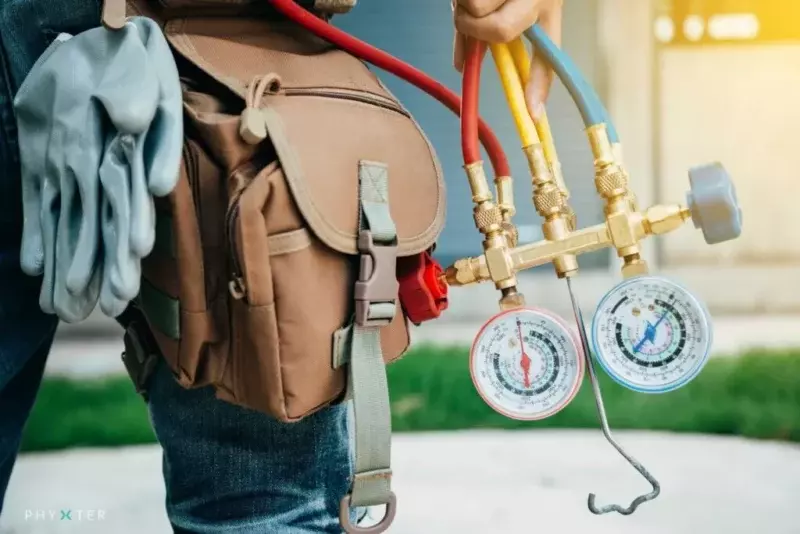
🔧 Tape Measure
A tape measure is ideal for HVAC technicians to have on hand for measuring lengths of refrigerant pipe or sheet metal ductwork.
Impact resistance and a self-locking mechanism can greatly improve the worth of your tape measure during a work call.
🔧 Pipe Wrench
Both an 8″ pipe wrench and a 14″ pipe wrench will be necessary when working on an air conditioning system. Opt for aluminum pipe wrenches to keep your tool bag nice and light.
🔧 Reciprocating Saw
A reciprocating saw with variable speed and anti-vibration technology can help you cut through any material during an HVAC installation or repair.
If you ever find yourself on the job without a reciprocating saw, you’ll wish you had one.
🔧 Wire Strippers
When wiring new air conditioner units, wire strippers will come in handy and prevent you from using a simple knife to strip the end of wires for connections.
A set will allow you to strip a few different wire gauges, too.
🔧 Hand Seamer
This tool helps you with ductwork installation when you need to make clean bends in sheet metal.
🔧 Cordless Drill
A cordless drill with a set of drill bits and driving bits might be some of the best items to invest in on this list.
The drill will help you make holes for running pipes and make quick work of screws, too.
Looking for the best power tool brand? Click here to find out!
🔧 Needle Nose Pliers
Out of all the sets of pliers you should have, a set of needle-nose pliers serves you best when you need to wire thermostats or work in other small spaces.
It’s wise to also keep channel-lock pliers with you and ensure that all your pliers have insulated handles to prevent electrical shock.
🔧 Tubing Cutter
Whether you’re working with PVC pipe for a drain or copper tubing for the refrigerant line, a tubing cutter will help you get the right length cut quickly.
🔧 Caulking Gun
Buy yourself a dripless caulking gun for when you need to close up all those seams in the ductwork you have been playing with.
A decent caulk gun is great for sealing all those extra holes you drilled…
🧰 HVAC Specialty Tools
Amp Clamp Multimeter
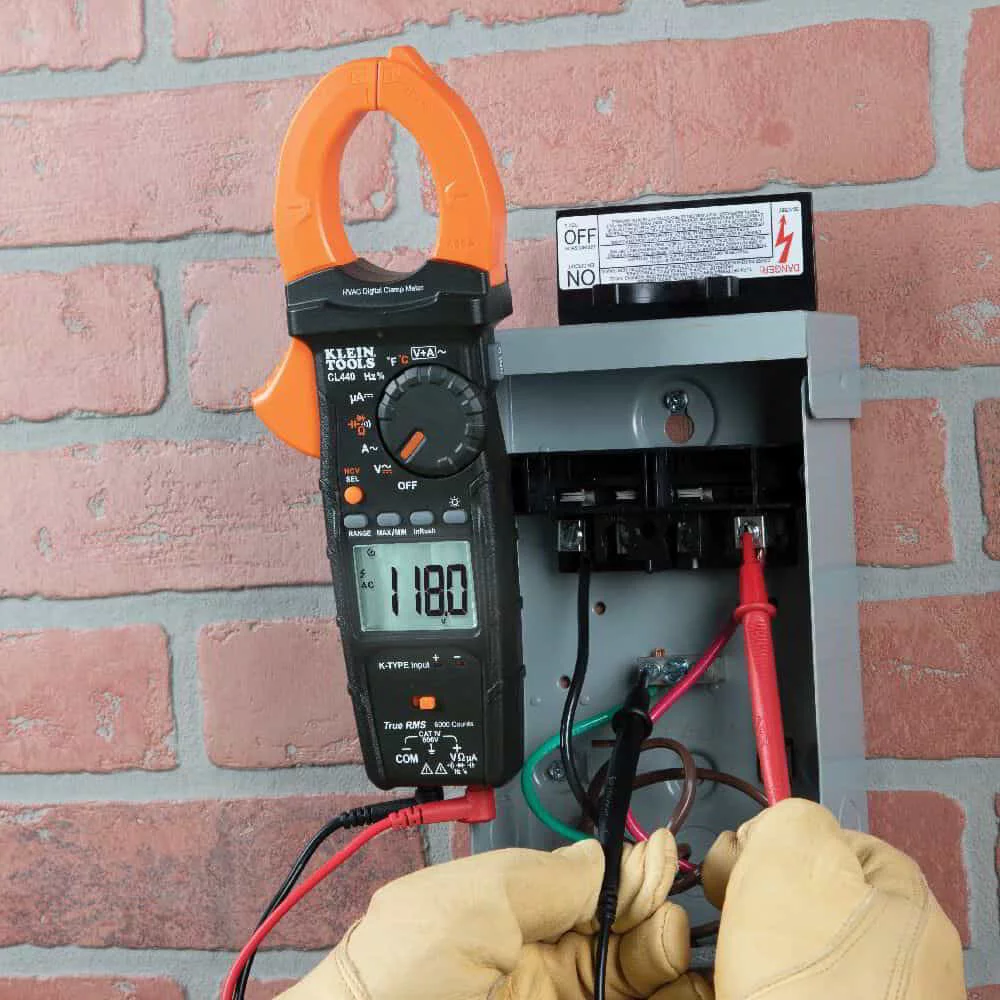
You’ll need to take electrical measurements with a multimeter to check components and electrical currents to avoid electrical shock on the job.
It’s vital to purchase a multimeter that handles the measurement of both AC and DC voltage.
Your multimeter will also need the ability to measure;
- continuity;
- amperage;
- and capacitance.
⭐ Our Recommendation
Klein Tools Digital Clamp Meter, AC Auto-Range TRMS, Low Impedance (LoZ), Auto Off
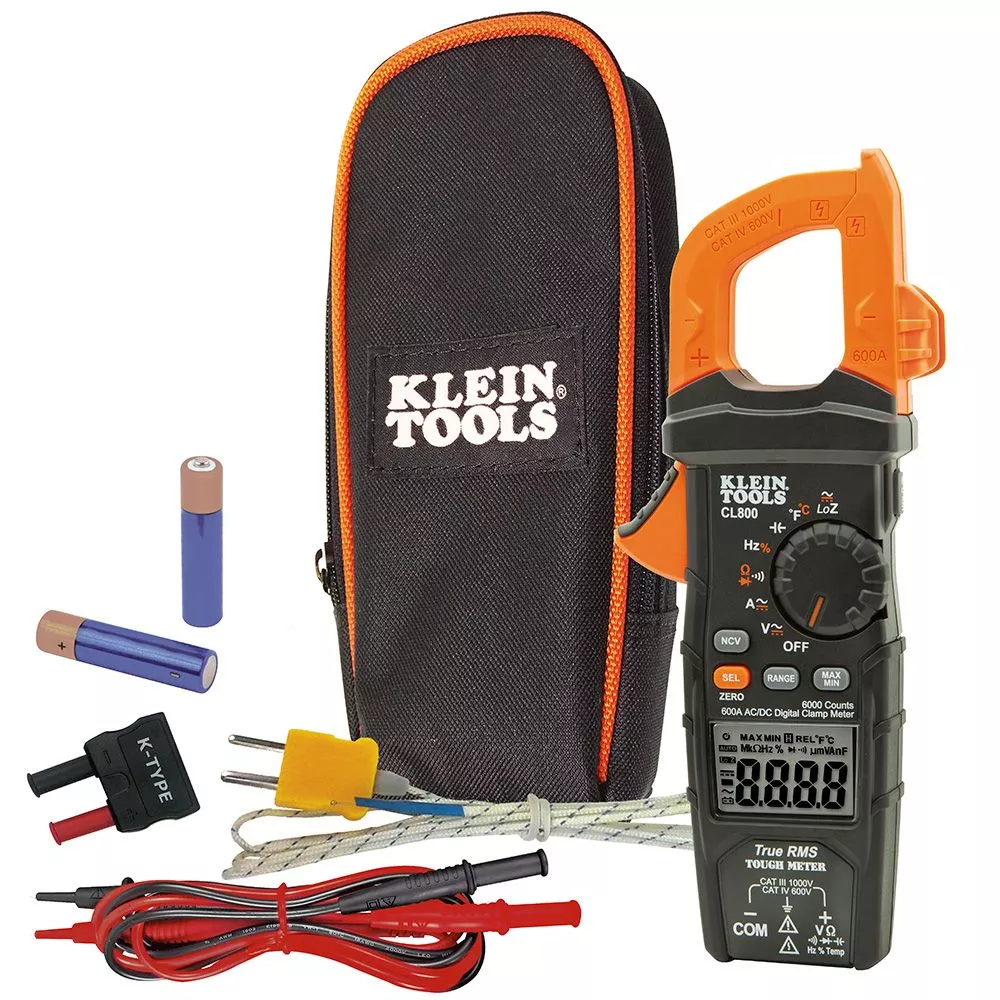
Recovery Unit
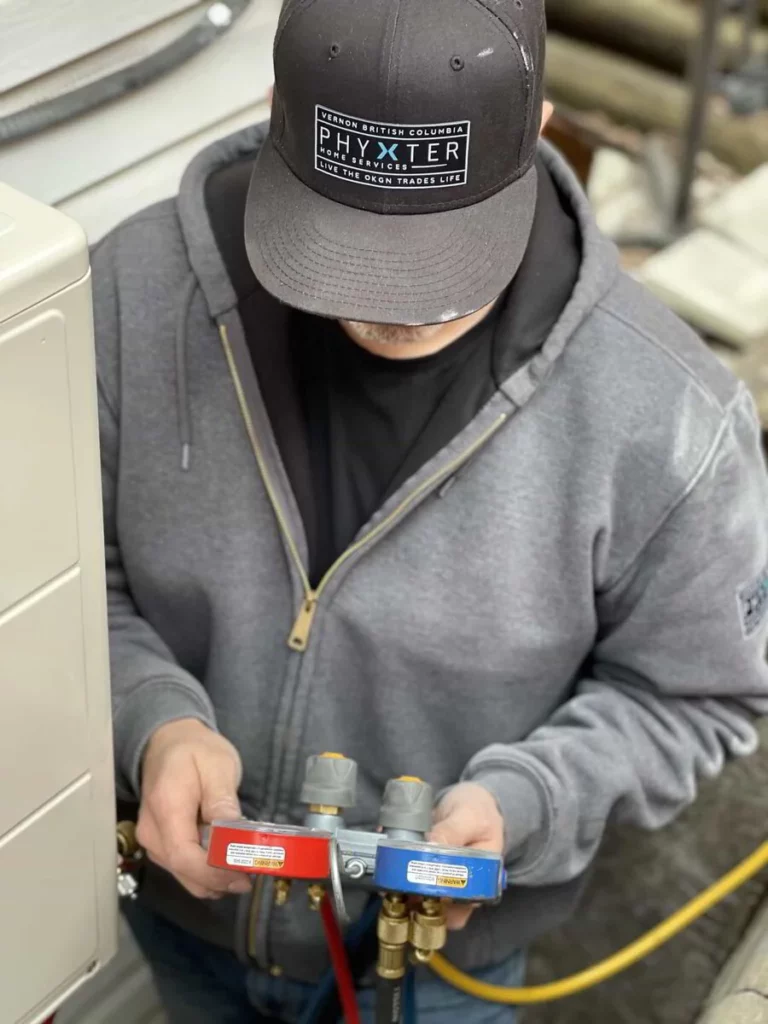
The refrigerant recovery machine allows HVAC service techs to extract refrigerant per EPA standards, making it an essential tool you’ll need for the job.
This is one of the things an employer or shop may supply an HVAC technician with to conduct work on air conditioning refrigerant pipes, like checking for leaks.
⭐ Our Recommendation
Yellow Jacket XLT Refrigerant Recovery Machine: 2-Port, NEMA 5-15p Male Plug, 1/4 in Male, 115 V Volt
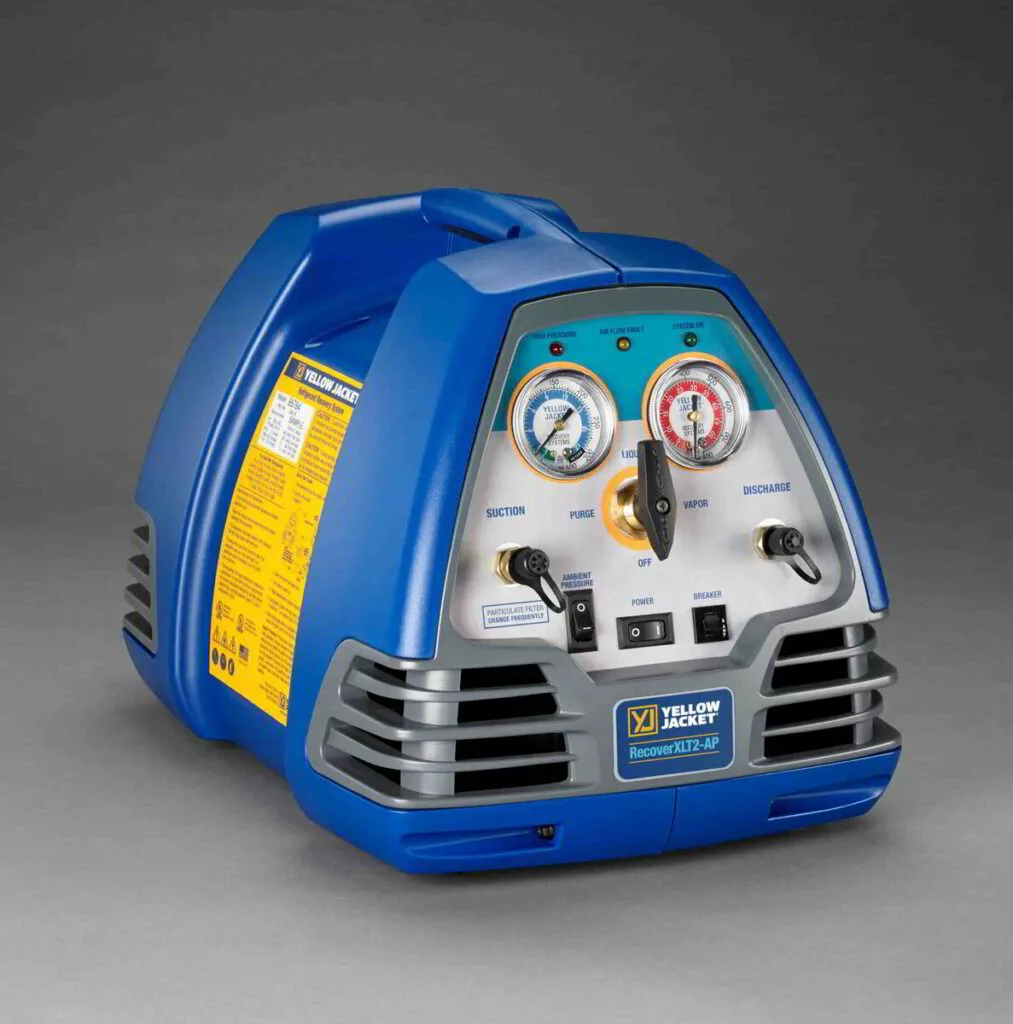
Vacuum Pump
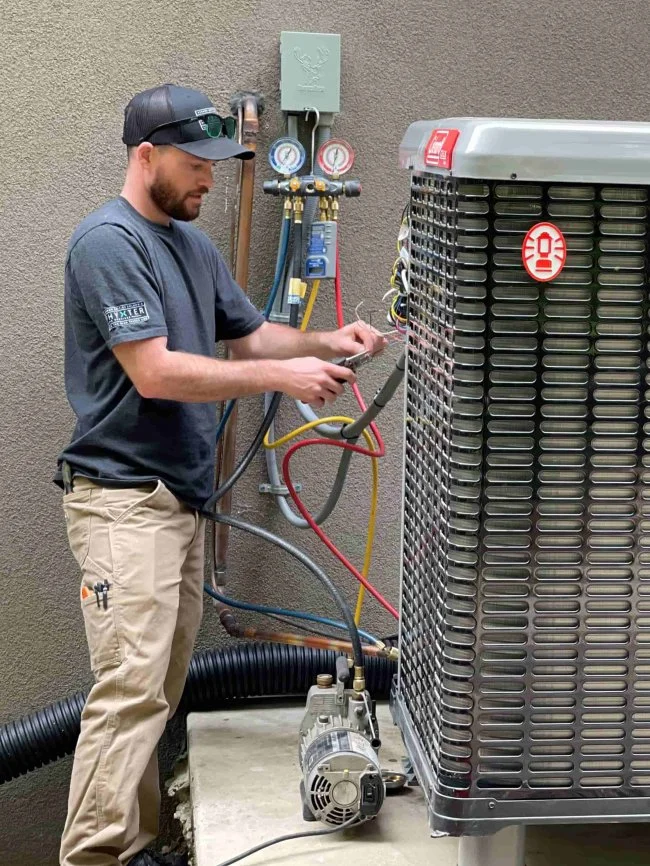
This is one of the most expensive items an HVAC technician will have in the field. You will need a vacuum pump to service any air conditioning unit where you’re working with the refrigerant.
Once you extract the refrigerant with your recovery machine, this tool prevents water vapor and air from entering the refrigerant line.
⭐ Our Recommendation
Yellow Jacket SuperEvac Plus II 1/2 hp 8 CFM Vacuum Pump, 115VAC
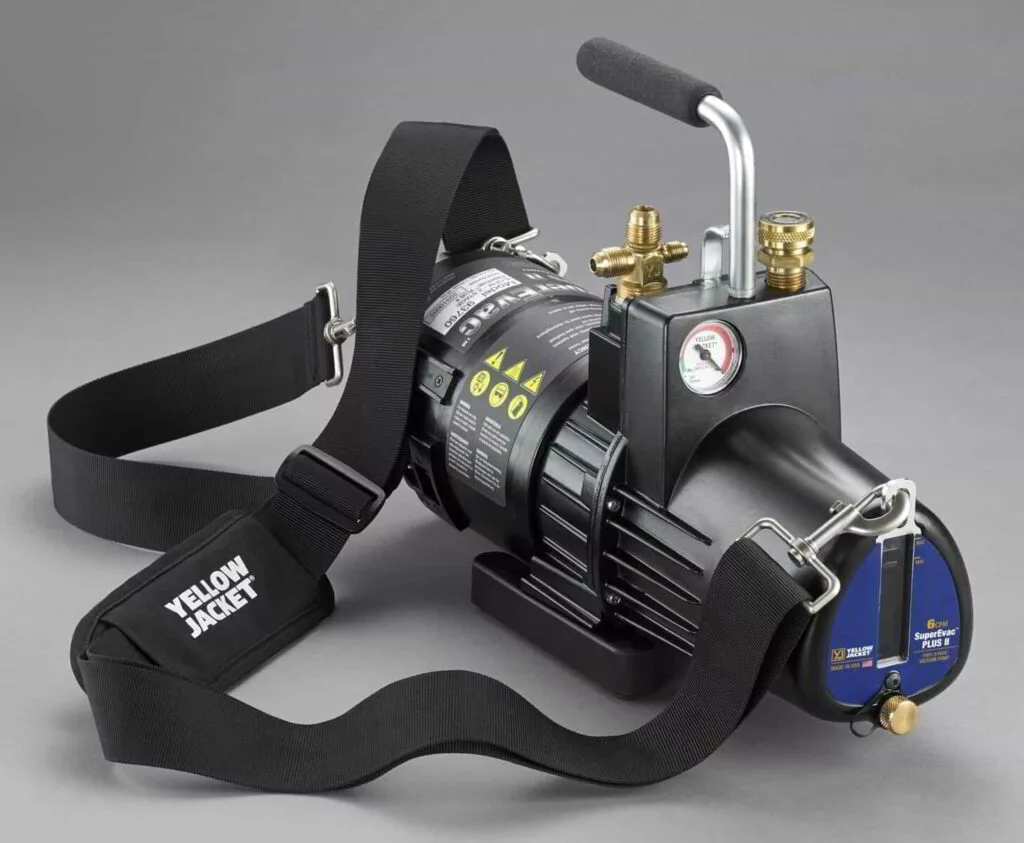
Oxy/Acetylene Torch Kit
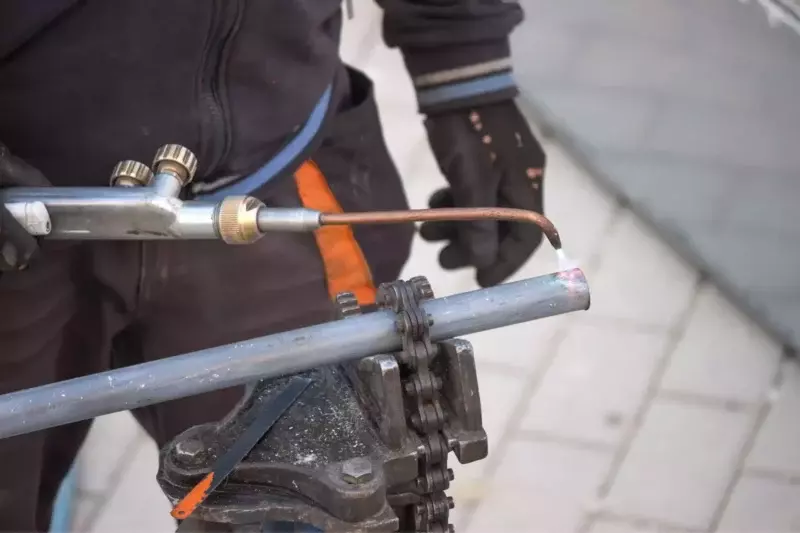
An HVAC technician tool list wouldn’t be complete without tools for brazing and soldering on the job. HVAC technicians use this tool to connect and solder the line set to the compressor and other parts of the system in the field.
It’s an item that helps service technicians get the job done quickly. However, you need to use the torch with care because this tool can also easily ruin pipes when used incorrectly.
⭐ Our Recommendation
Lincoln Electric Oxygen Welding; Cutting; and Brazing Kit
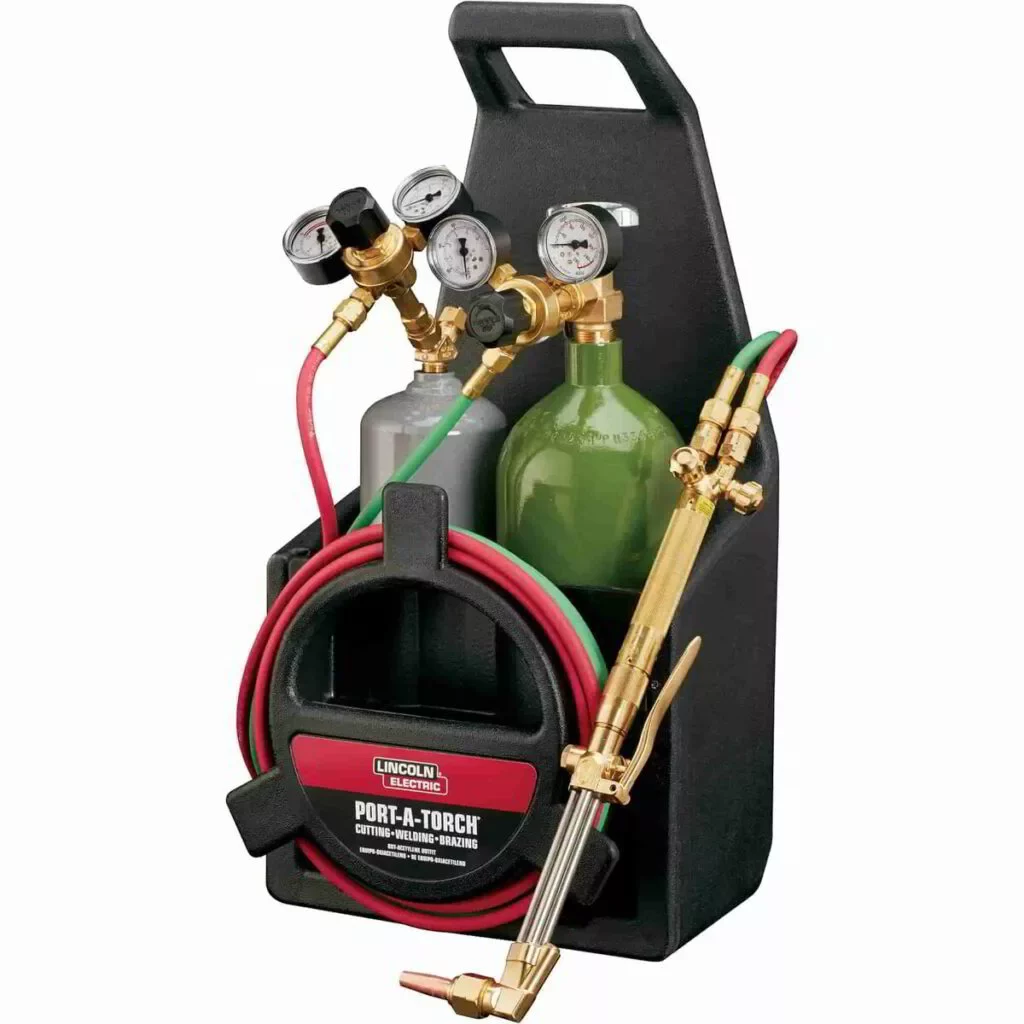
Digital Weigh Scale
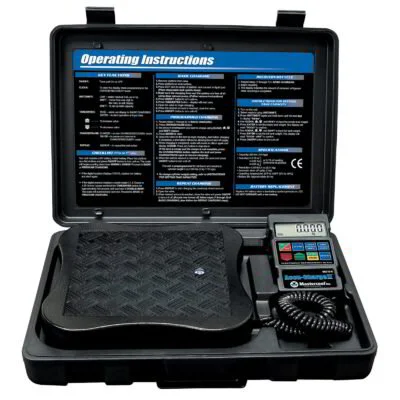
When an HVAC technician performs maintenance or installs a new HVAC unit, the job requires a digital refrigerant scale.
After the service technician pulls the refrigerant from the line set with other HVAC tools, they use the weight scale to check the amount of refrigerant. A significantly low reading indicates that the pipe could have a leak.
⭐ Our Recommendation
Mastercool Accu-Charge II Programmable Refrigerant Scale

Tube Bender Kit
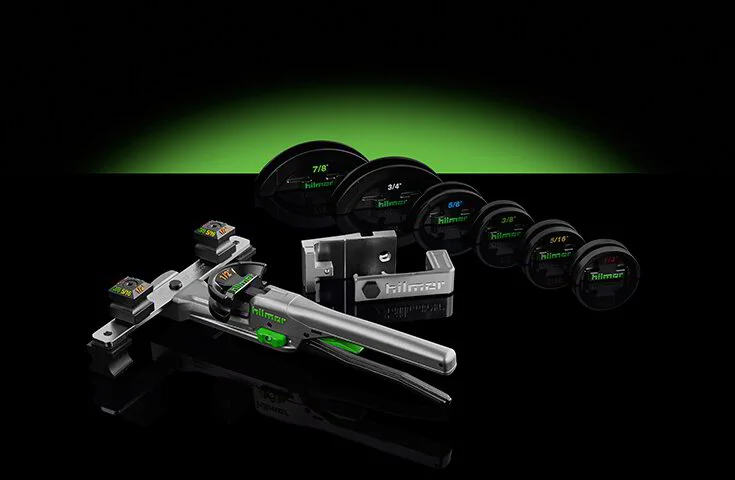
A tube bender is one of the more forgotten HVAC tools. As an HVAC technician, you will need a tube bender to create clean angles on line set tubing.
While you can service a customer’s unit without one of these tools, any HVAC technician who works with a tube bender will never want to work without one again.
⭐ Our Recommendation
Hilmor Compact Bender Kit with Reverse Bending Attachment for 1/4″ – 7/8″ Tube and Pipe Bending

Refrigerant Leak Detector

HVAC systems age like any other technology, and unfortunately, they develop wear and tear after years of use.
Refrigerant leaks are not uncommon in older HVAC systems. Service technicians use leak detection tools to help locate them in the line sets.
These tools range from electronic leak detectors to dyes that give visual indications of the exact location in the HVAC refrigerant line.
⭐ Our Recommendation
Klein Refrigerant Gas Detector, Detects Gas Leaks in the Presence of CFC’s, HFC’s, HCFC’s and Blends as Low as 100 PPM
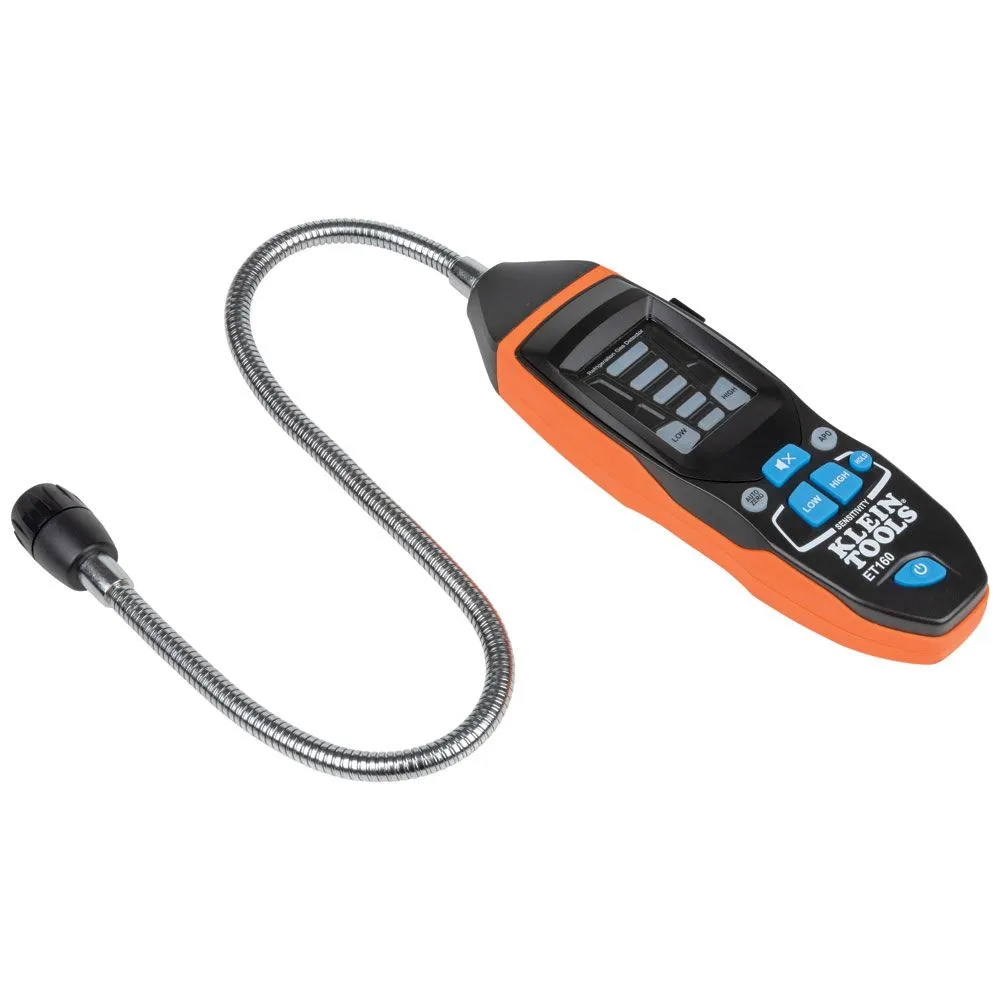
Psychrometer
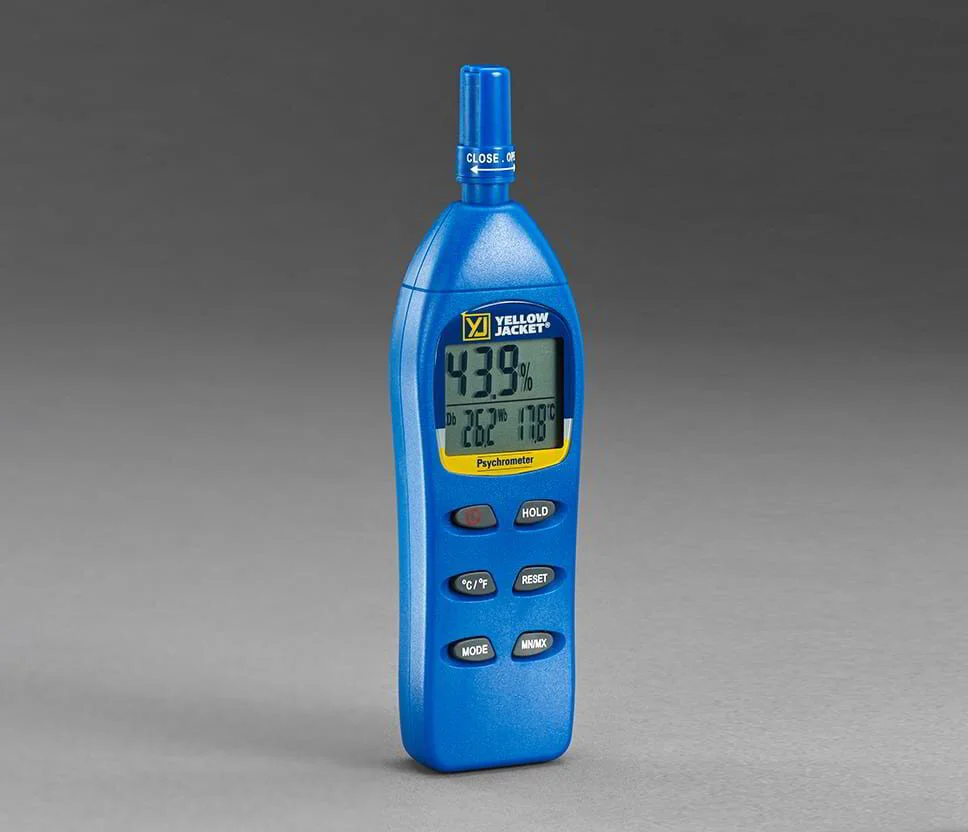
This may be one of the most valuable tools in a service technician’s arsenal. With this gauge, an HVAC technician can determine the humidity of a room.
High levels of moisture in the air will affect the comfort of your customer.
As an HVAC technician, tools that allow you to maximize customers’ comfort are invaluable.
For commercial HVAC service, maintaining proper humidity may be essential for manufacturing purposes, too.
⭐ Our Recommendation
Yellow Jacket Hand Held Digital Psychrometer

Combustion Analyzer
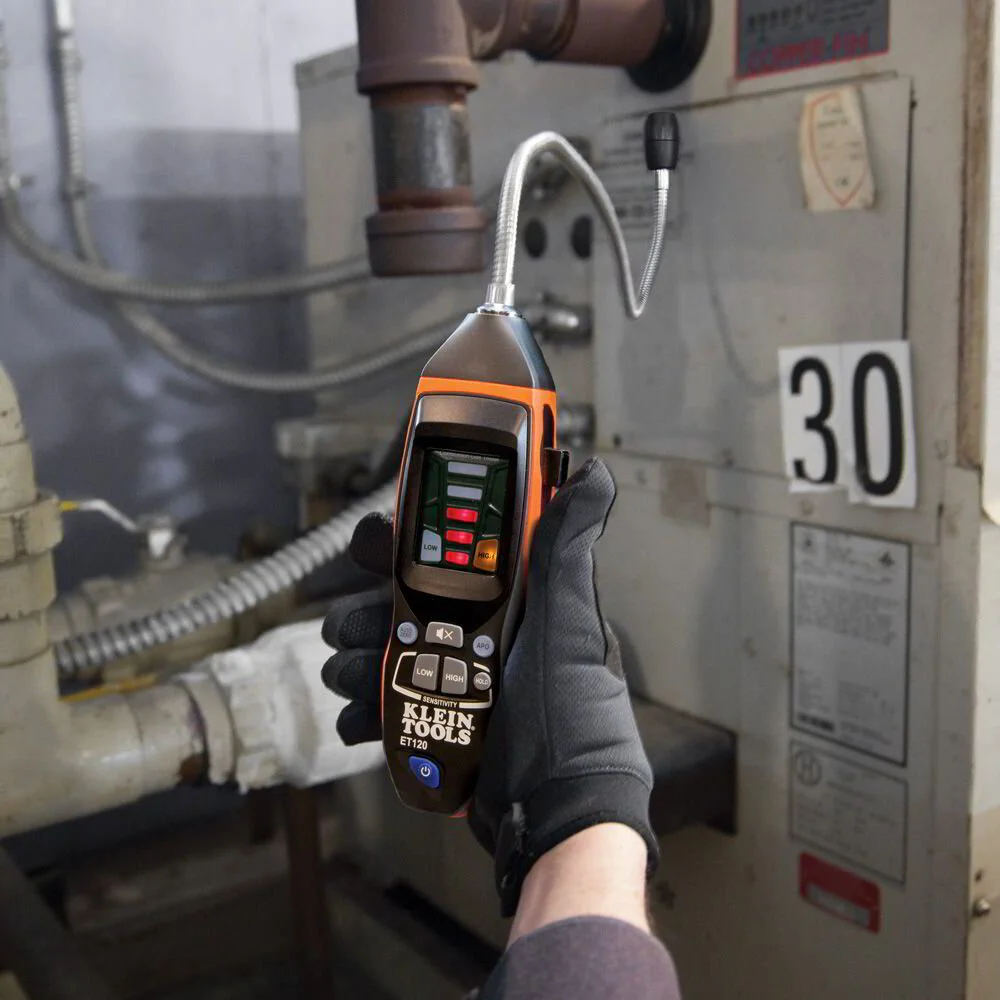
Though most of these tools focus on assistance with the outdoor HVAC units, you also need tools to work with the indoor equipment.
Combustion analysis is vital to determine the efficiency of furnaces and boilers—the analyzer assists with determining gas levels, pressure in the flue pipe, and stack temperature.
⭐ Our Recommendation
Klein Tools Gas Leak Detector, Combustible Gas Leak Tester with 18-Inch Gooseneck Has Range 50 – 10,000 ppm, Includes Pouch, Batteries.
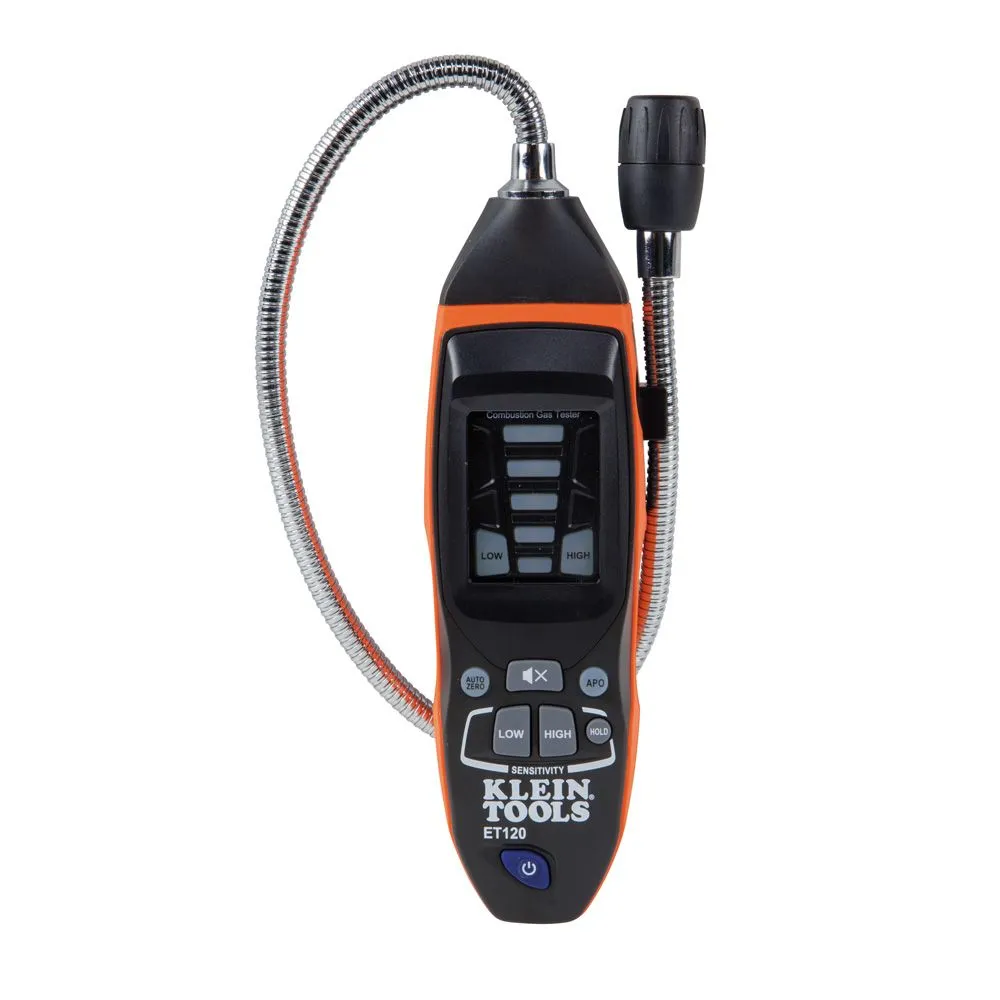
Digital Manometer/Anemometer
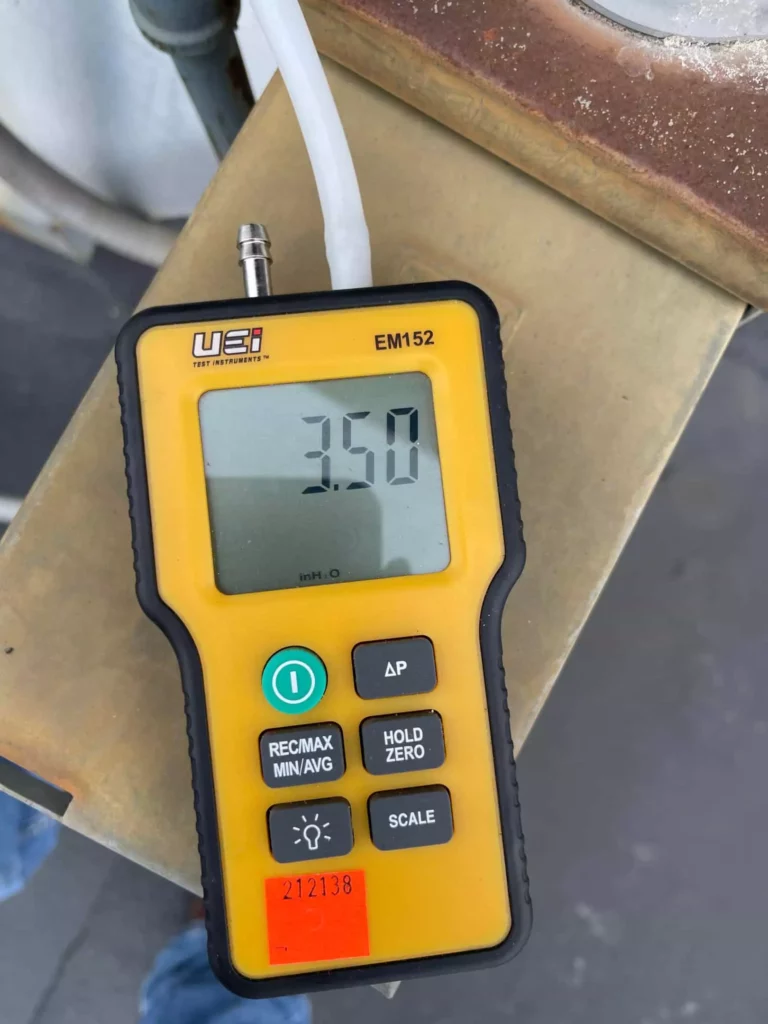
This HVAC technician tool list is full of tools that allow you to take different heating and cooling unit measurements.
The manometer lets you measure the static pressure within a system’s ductwork. Maintaining a proper balance of airflow in the ducts is crucial to ensuring the system’s efficiency.
⭐ Our Recommendation
Fieldpiece Dual-Port Manometer

Flaring and Swage Tool
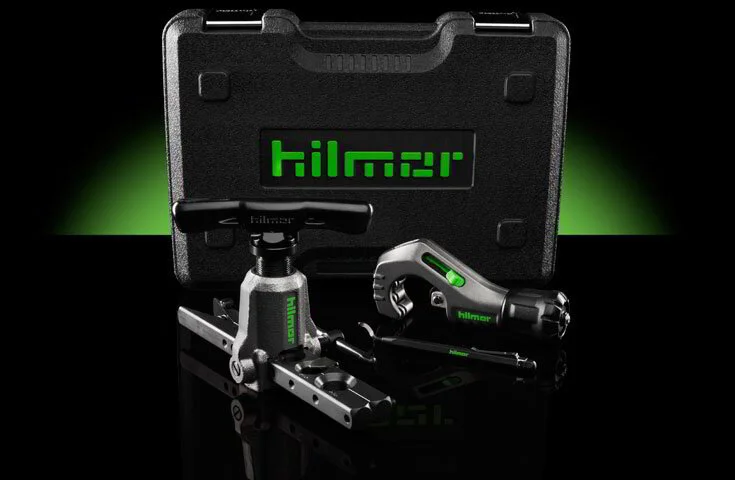
Flaring tools give you the ability to fit pipes together while on the job. The flaring tool widens the end of copper piping so that it fits on its new connection.
While swaging is similar to flaring, opening the end of a tube with a swage tool creates a deeper opening and a different shape than with a flare tool.
Both methods are cold forming techniques, and neither requires sacrificing any material.
⭐ Our Recommendation
Hilmor Orbital Flare Kit with 1⁄8″ – 1-3⁄8″ Tubing Cutter, Pen Style Deburring Tool & Storage Case
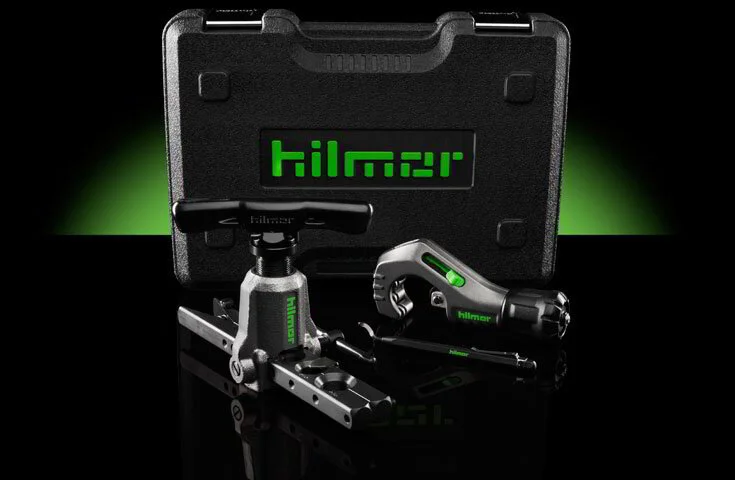
Deburrer
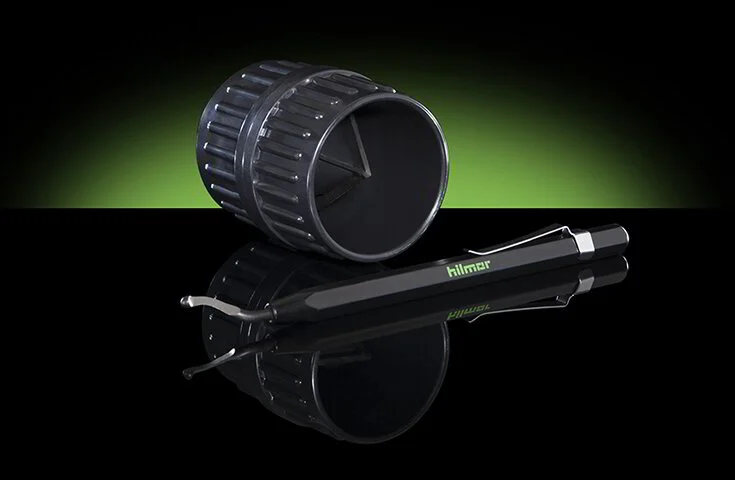
After cutting the copper tubing for a refrigerant line, you will see metallic burrs on the pipe’s interior.
This tool removes the sharp burrs from the inside of the pipe, which helps keep a steady flow of refrigerant passing between joints.
In the deburring process, it’s vital to check that none of the burrs remain inside of the copper pipe.
⭐ Our Recommendation
Hilmor 1/4” to 1-5/8” OD Deburring Tool Kit

Bonus: Thermal Imaging Camera
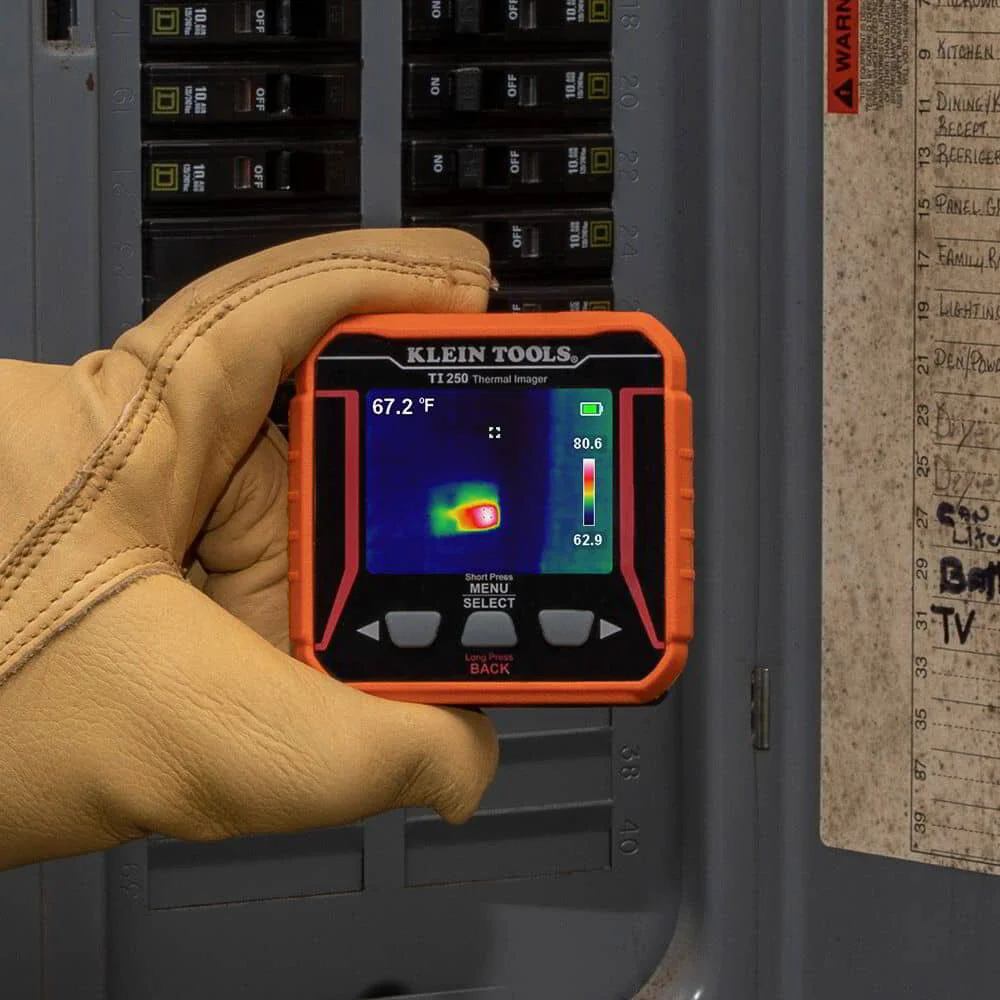
Thermal imagers have a couple of different applications when it comes to HVAC work.
One of these cameras can let you easily locate leaking air from the ductwork.
Using the heat signature from the camera, a technician can identify problematic areas in a system’s ducts that cause inefficiency.
A thermal imager allows you to detect leaking water and moisture that can cause problems if left unattended.
⭐ Our Recommendation
Klein Tools Rechargeable Thermal Imager, Camera Displays Over 10,000 Pixels with 3 Color Palettes, High / Low Temperature Points
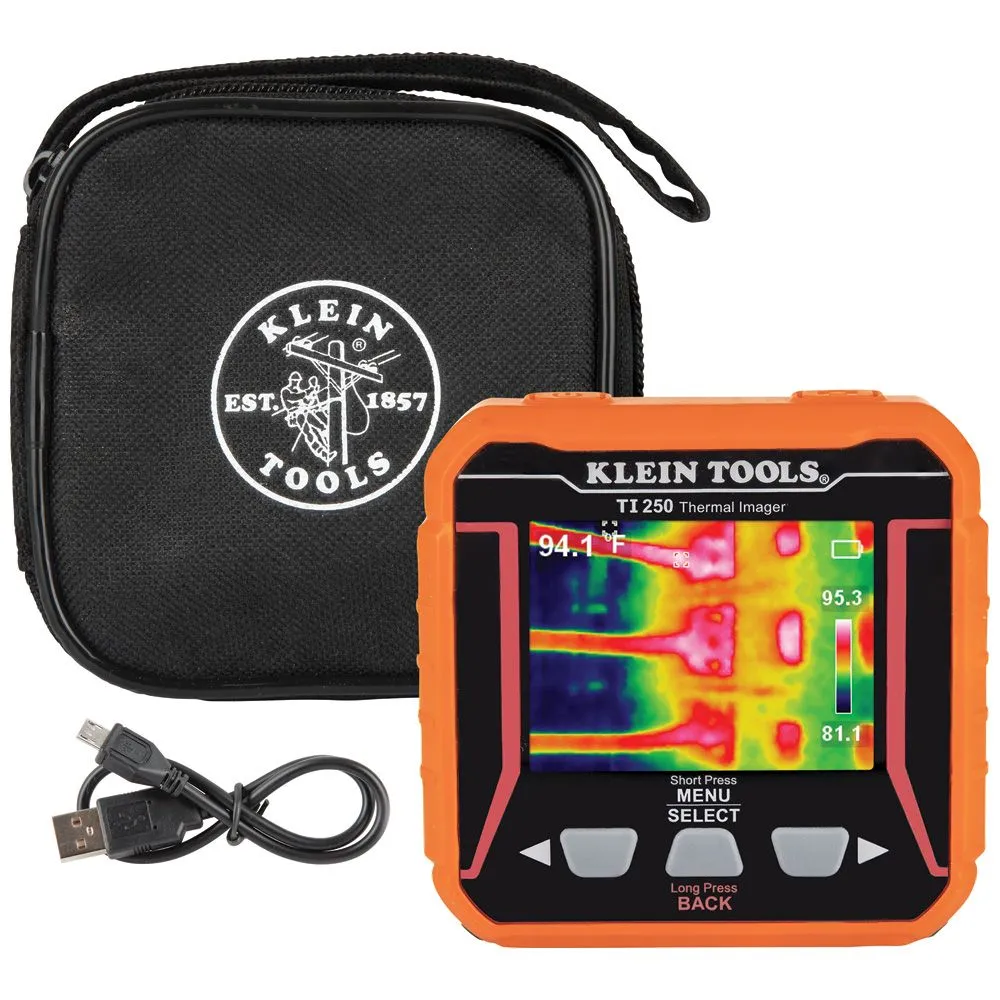
🧰 Miscellaneous and Safety Tools
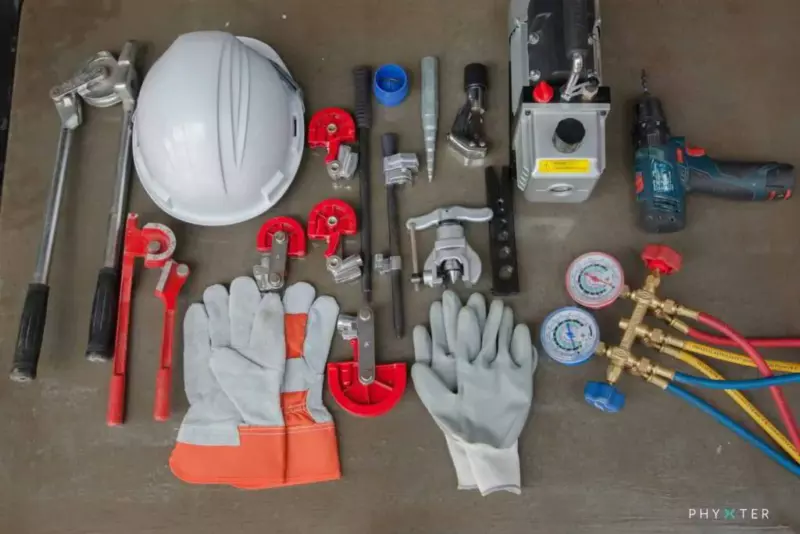
🔧 Safety Glasses
When doing any work as a technician, a pair of safety glasses is essential for protecting your eyes from small particles such as metal, dust debris, and hazardous chemicals.
🔧 Ear Plugs
You will use many power tools on the job, so a good set of earplugs is essential to protect your hearing.
Don’t let those old techs tell you otherwise. There’s a reason they don’t listen. Most of them are deaf…
🔧 Gloves
A pair of gloves protect your hands while you work, and insulated gloves can prevent electrical shock on the job.
🔧 Work Boots
As an HVAC technician, long days on your feet mean you’ll want a pair of comfortable boots while in the field.
🔧 Extension Cord
Having a pair of extension cords in your work vehicle ensures that you’ll have plenty of room to work with your power tools.
The customer might not always have an extension cord available for you, and it’s best to avoid borrowing homeowners’ tools if you can help it.
🧰 Follow the Phyxter Blog

Follow the Phyxter blog for more tips for service techs like this HVAC technician tool list.
Phyxter is an industry-leading company that connects customers to technicians for all kinds of home services.
For more tips like this list of essential HVAC tools, follow the Phyxter blog today.

